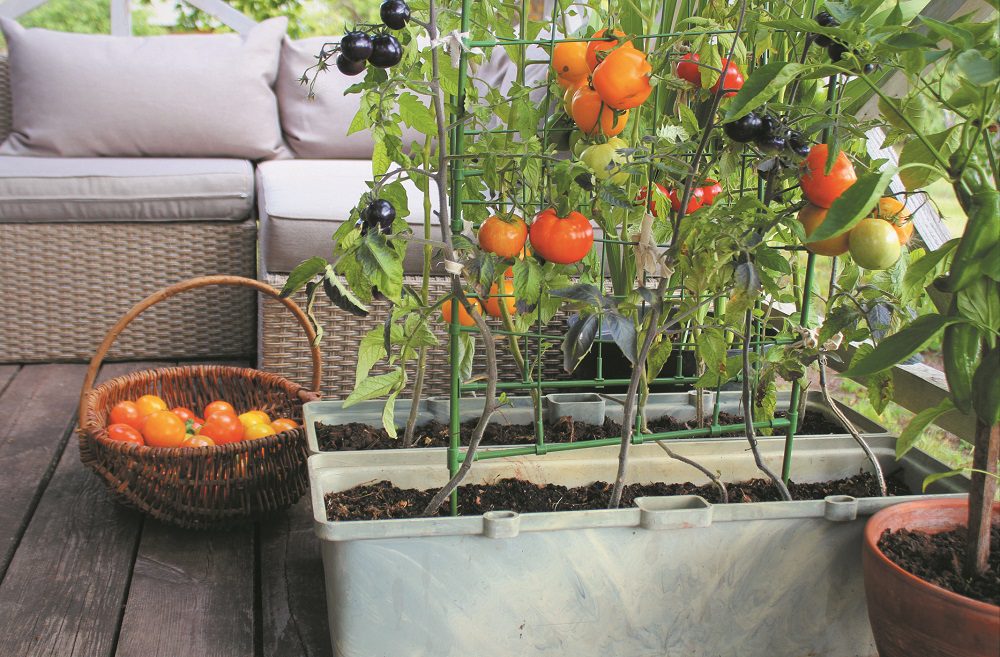Who doesn’t love garden-fresh produce? But if all you have is a deck or balcony, you may think you can’t grow your own. Solution: Grow potted versions of your favorite vegetables. Here’s how…
Examine plant labels and descriptions. Find suitable varieties wherever seeds or starts (seedlings) are sold. They might be labeled “for containers,” “dwarf” or “patio” plants. Also keep an eye out for these clever variety names…
- Bush beans: Porch Pick.
- Carrots, which come in short, stubby varieties such as Chantenay.
- Cucumber: Spacemaster, Patio Snacker.
- Eggplant: Morden Midget, Patio Baby.
- Lettuce: Little Gem, Tom Thumb.
- Peas: Peas-in-a-Pot, Snowbird.
- Peppers: Confetti (colorful bell peppers), Pot-a-peño, Quickfire (hot Thai).
- Radishes: Cherry Belle, Solaris.
- Spinach: Baby’s Leaf, Melody.
- Tomatoes: Bush Early Girl, Patio Delight, Sweetheart of the Patio.
- Zucchini: Bush Baby, Patio Star.
Prepare a place in the sun. Ideal: At least six to eight hours of plentiful sunshine per day. Greens can get by with less or grow in light filtered by nearby buildings, fences or trees. Afternoon sun is preferable to morning.
Pick the right containers. Pot size depends on what you are growing…
Leafy greens have shallow roots and do fine in pots six to eight inches deep.
Tomato, bean and pepper plants do best in pots around 10 to 12 inches deep.
Veggies with edible roots such as carrots and radishes benefit from pots that are 12 or more inches deep.
Individual plants do fine in individual pots or hanging baskets. Window boxes and planter boxes allow a bigger harvest. You can raise several little lettuce, arugula and/or pea plants together or group a few pepper or bush bean plants.
Consider container weight: Plastic pots often are best. Ceramic and clay containers can be heavy when full. And a balcony, rooftop or fire-escape garden may have weight limits.
Containers should have drainage holes so water can pass through. Otherwise, plants will struggle.
Consider timing. If you are raising your plants from seed, start them early indoors (directions for when and how appear on seed packets). Some vegetables, such as carrots, lettuce, peas, spinach and radishes, do best in cooler spring or fall weather. Beans, cucumber, eggplant, peppers, tomatoes and zucchini relish hot summer weather.
Keep up with watering. Potted edible plants need consistent water. Cycles of flooding and drying out cause their leaves and fruits to become misshapen, and they won’t taste good. Also, stressed plants attract pests and diseases. Reminder: Plants growing in small pots dry out fast in hot summer weather.
If you can’t be that attentive: Set your pots in pie tins or trays of water, or invest in self-watering pots and watering gadgets. Automatic drip-system watering kits can be made with simple timers.
Tip: Creating clusters for beneficial “community humidity” can simplify watering. Set a shallow cookie sheet on the deck…fill it with potted plants…then pour water onto its surface. Each pot will suck up the water it needs.
Feed your plants. At first, they’ll get nutrition from the potting mix, but as the weeks go by, that will be depleted. Simply mix fertilizer with their water. Any “all-purpose” concentrated product, such as Miracle-Gro, will do.

